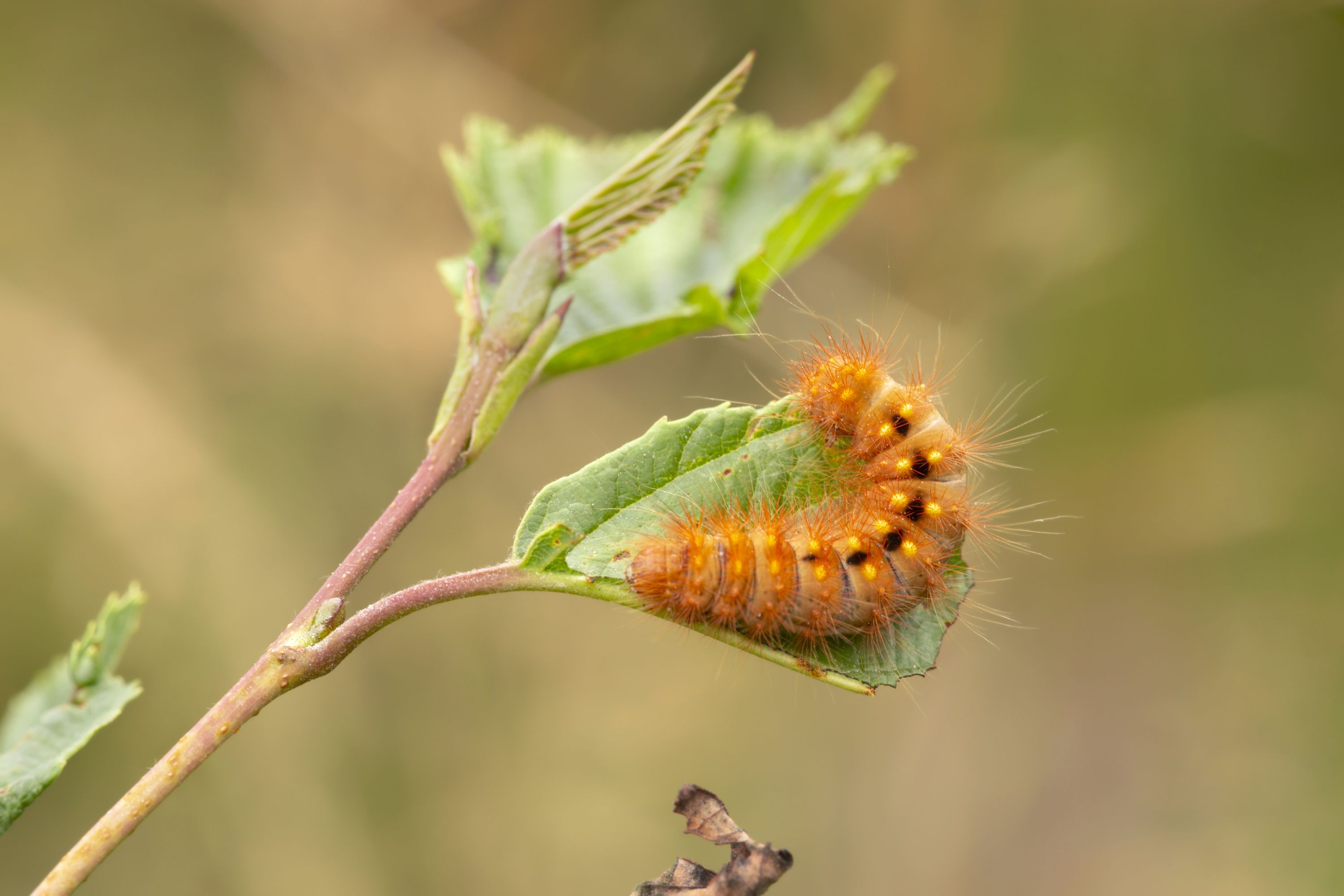Scarce dagger
(Acronicta auricoma)

Description
Acronicta auricoma, the scarce dagger, is a moth of the family Noctuidae. It is distributed through most of the Palearctic. Missing in the Iberian peninsula. On the Italian peninsula the occurrence is limited essentially to the Alps and the Apennines as far as Calabria. On the Balkan Peninsula the range is extreme northern Greece with small isolated occurrences in Central Greece. Missing on the most Mediterranean islands with the exception of the Balearic Islands. Extinct in England since 1912. Otherwise all Europe up to north of the Arctic Circle in Scandinavia. In the East, the distribution area stretches over Russia and Siberia to the Russian Far East, in the South to Asia minor, Cyprus, the Caucasus, northern Iran, Northern Iraq and Afghanistan to Central Asia. The wingspan is 36–42 mm. The forewing is grey, with dark dusting; base of inner margin pale ochreous; a short black basal streak and another above anal angle, often obscure. The adults fly at night from May to June and from mid-July to August in the British Isles. The larvae feed on a number of plants, including oak, Rubus, Calluna and Vaccinium. Acronicta is a genus of noctuid moths containing about 150 species distributed mainly in the temperate Holarctic, with some in adjacent subtropical regions. The genus was erected by Carl Linnaeus in his 1758 10th edition of Systema Naturae. Caterpillars of most Acronicta species are unmistakable, with brightly colored hairy spikes, and often feed quite visibly on common foliate trees. The hairy spikes may contain poison, which cause itchy, painful, swollen rash in humans on contact. The larva of the smeared dagger moth (A. oblinita) is unusually hairy even for this genus. Acronicta species are generally known as dagger moths, as most have one or more black dagger-shaped markings on their forewing uppersides. But some species have a conspicuous dark ring marking instead. Its eyes are naked and without eyelashes. The proboscis is fully developed. Antennae are simple in both sexes. Thorax and abdomen tuftless. Abdomen with long coarse hair on the dorsal part of proximal segments. Legs spineless. Forewings with non-crenulate cilia. Inner margin slightly lobed towards base.
Taxonomic tree:







